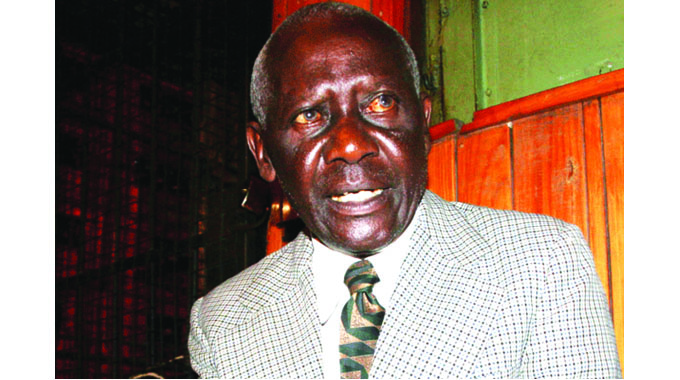Multiple voices in ‘The Book of Not’
Tsitsi Dangarembga’s “The Book of Not” (2006) traces how people who are sharing the same national geographical boundaries, and yet kept apart in practice by racist laws and regulations of colonialism, relate with each other. The novel interrogates the possibility of mending chaliced colonial relationships. This task becomes more difficult when racial relations degenerate into open warfare when the privileged Whites refuse to share with the Blacks who feel similarly entitled.
Dangarembga identifies the different narratives that appear from such an environment and seeks to understand how these relate to the Fast Track Land Reform Programme, and how these narratives reflect society. Where White narratives tend to treat the Africans as “invisible” (Baxter, 2010: 382) and in Dangarembga’s novel as “terrorists”, Dangarembga subtly interrogates this “singular experiencing of ‘history’” Raftopoulos (2004: xiv).
The novel challenges continued White attitudes of excluding Blacks from the land even in the face of a protracted war and a general anti-White sentiment, which was driving the liberation struggle.
Unfortunately, there are Black people like Tambu who seem to have a similar form of whiteness, which is destructive in its inability to identify with Black interests.
Even when it does not touch on the post-2000 land question specifically, the novel foregrounds the nature of the land reform by suggesting how the nation can deal with it, based on how earlier race fractures have been handled. The past gives a manual on what to do, and what not to do in the present.
The question which the novel seems to address is, from whose ‘history’ are land issues dealt with? Dangarembga uses such histories to understand current White and Black attitudes and actions. By considering both Black and White histories/narrations, Dangarembga seems to suggest that writers must “desist from projecting ‘their’ chosen “micro narratives…as national history” (Pilossof, 2012: 13).
Tambu filters into both the Black and White spaces, those of Black deprivation, interspersed with those of White promise and she grapples with the tensions and contradictions inherent in them and in the process, she reveals how conflicted both races are and how their histories account for their actions during the reforms.
Tambu’s efforts to understand both worlds and their complexes make her a suitable critic of the two. Her approach opens criticism and shows that there is no longer any poverty of theory in dialoguing.
Notwithstanding her perspective being Black, the novelist genuinely tries to straddle the schizophrenias that have kept the Black and White races apart (Alexander, 2004: 194).
Since land is crucial “for control, mobilisation, resistance and nation building, evidenced in both its colonial and post-colonial manifestations” (Pilossof, 2012: 2), such an inclusive approach to its reform is necessary. In addition, for Blacks, the land is spiritual as well.
In this case, whether one has unhu or not, or is human or inhuman, depends on one’s proximity and relationship with the soil.
Differences of the past are not merely intimated and conveniently used for positioning. Their very bases, emerging from everyday racial interaction, are interrogated.
Aware that the ‘facts’ of historical dispossession prejudice those denied a narrative voice to tell their own story, Dangarembga looks to daily race relations between ordinary people, and between ordinary people and authority, to reveal and question injustice (Matondi, 2012). This allows the different races to imagine alternative solutions to the land debates, which options would never have arisen had human interaction and relationships not been treated as multi-layered.
A brutal armed struggle comes out early in the novel to give an underlying, garishly realistic picture of how far human relations have deteriorated. The dismembering of Netsai offers a traumatic backdrop against which Dangarembga seeks to suggest, and even argue, against current racial relations and attendant resource distribution dynamics. In showing these ghastly images, the writer insists on more human relations that can save the community. The effects of war show what not to do, what racial relations, if not approached properly through a model that best serves everyone, will degenerate into.
No matter the justification that an affected and aggrieved group may give for war, no matter the “justness of their particular claims” (Chigara, 2004: xv), committing to war is in most cases a last resort. In its own way then, Dangarembga’s novel insists that the destruction in the struggle for independence seems typical of how not to solve problems afflicting a country. While the war brought about Independence and Black rule, Dangarembga feels that the legacy of confrontation and war is the wrong model for land redress in independence. Yet, the novel is clear as well in showing how the situation on the ground is unfortunately characterised by White intransigence, which causes this radicalism. These are the same White attitudes which offer the bedrock upon which the radical post-2000 land reform rests.
Dangarembga’s novel forms part of ‘a new mass of writing” (Kaarsholm, 2005: 4) which is not plaudit and euphoric, but which allows for alternative vistas, especially from below, to manifest through questioning authoritarian narrations, “be they racist, colonial, patriarchal, traditional, the result of wartime intimidation, or imposed by an authoritarian post-colonial state” (Kaarsholm, 2005: 4). As Dangarembga ferrets for what she feels to be missing from the dominant narrative and exposes the grim, unacceptable nature of conflict, she allows what Fuentes (1989) describes as the “intermingling of disagreeing voices” (cited in Kaarsholm, 2005: 4) which rejects radical, particularistic solutions to problems.
Differences subsist among the Black people as well and they are equally difficult to manage. At the night vigil “pungwe”, Babamukuru must deal with the vitriol and accusations thrown at him by the guerrillas and the community at large. Even Mai Tambu seems to nurse a grudge against him, despite everything that he does for her family. Relations within the Sigauke home are fragile. His major transgression seems to be his proximity to Whites and his access to the economically privileged spaces this allows him. People look at him and see one whose “soul hankered to be at one with the occupying Rhodesian forces. Mutengesi”.
In truth, Babamukuru contributes to the war effort in his own way. He even uses the same position and resources that mark him as a sell-out to help the community. Then there is also the role he plays to keep the Sigauke family alive and united in these trying times. Tambu benefits from his largesse and her inclusion within the economic structure, now and in the future, depends on the education Babamukuru helps her to get. He funds her education from his modest salary, driven by the conviction that she will play a crucial role in the betterment of the family. Babamukuru in this regard testifies to the fact that education and one’s ‘closeness’ to the Whites do not always result in one’s alienation.
Regardless of his position and the use to which Whites may put him, Babamukuru does more good than harm to the Black people. His crime seems not so much to be of betrayal and alienation, as it is of the failure to abide by the dominant nationalist narrative of the day whose overarching desire for unity will “subsume all (other) identities and politics below the national level” (Raftopoulos, 2009: xxv). It seems as if he is marked for not being poor like everyone else. Ironically, he becomes a sell-out for being what everyone else wants to be, but is unfortunately unable to become. Babamukuru is ‘different’ and that unfairly works against him under colonialism.
For Dangarembga, the answer pertaining what to do is clear enough and it lies in the very values Black people have always upheld. Every time Black people meet, regardless of the time of the day, one of them asks after the wellbeing of the other: “How are you?” (‘Makadii?’), and the answer is always the same: “I am well if you are well too” (Tiripo kana muripowo). One is, and can only be, well, if the other one is.
One’s state of being and happiness depends on that of the other person. The happiness, and contrastively, the sadness of an individual, causes a similar disposition in the life of the other. By association then, such a conception of the world implies that White privilege should never be tolerated amidst Black deprivation and vice versa.







Comments